Dog Tooth Extraction – Costs And Treatment
It’s not uncommon to find that your pet has a broken tooth.
Or your vet discovers a fractured tooth during a routine health check such as when you present your pet for vaccination.
Most animals that have broken teeth display few, if any, signs of pain.
This, however, doesn’t mean that a broken tooth is nothing to worry about.
And, a broken tooth isn’t necessarily the only time that your dog (or cat) may need teeth to be removed.
More often than not, tooth removal is required when there is a severe infection present, usually due to a lack of dental care over the course of the pet’s life.
Broken teeth require removal or in some cases, they can be repaired.
Cat and dog tooth extraction costs can vary quite considerably from one veterinary clinic to the next.
In this article, we will discuss why prices differ as well as how to recognise the signs of broken teeth and the veterinary treatment for them.
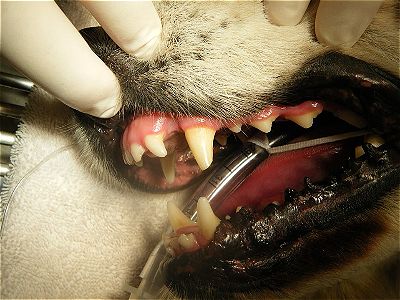
Cat Or Dog Tooth Extraction Cost
The cost of tooth removal depends on many things:
- type of tooth that is damaged
- the extent of damage to the tooth
- how low the tooth has been damaged for
- requirements of the pet – do they have any existing medical conditions that need special requirements for anaesthesia?
- type of repair i.e. basic removal vs difficult removal vs capping
If you notice that your cat or dog has a broken tooth, you will need to go to the vet and have them look at your pet and give you an estimate.
It’s very difficult to give quotes without examining the animal for the following reasons:
- we often can’t see the true extent of the problem in an awake animal
- animals are all different and what one might need can be completely different to what another animal needs due to their anatomy or other factors. Yes, this is frustrating!
- the amount that a vet charges will differ
- where the vet is located i.e. country
- what overheads the vet business has
- the qualifications of the vet – are they a specialist dental vet who can charge more?
The ballpark cost for a simple cat or dog tooth removal can be as little as $600.
As a more advanced procedure is required or if it’s a tooth with a strong, healthy root that needs removal, the price can substantially increase to over $2500.
In some cases, your vet may be able to stage the extraction process so that smaller surgeries are performed multiple times so that less upfront payment is required.
The best thing you can do is have an honest discussion with your vet about what is best for your animal and your finances.
Reasons Teeth May Need Extracting
- Broken
- Severe Infections – gingivitis, periodontitis
- tooth abscess
- Presence of an oral tumour
- Dead teeth
- Immune-mediated stomatitis
- Poor alignment causing pain
Broken teeth can occur due to trauma from an external force such as a motor vehicle, cricket bat or chewing on rocks.
Sometimes teeth are prone to fracture due to underlying disease or poor conformation of the jaw.
Symptoms Of Broken Teeth
When a tooth is first broken you may see the following signs:
- Drooling
- Pawing at mouth
- Reluctance to eat, or chewing on one side
- Sneezing, or even a bloody nose (some teeth have roots that connect to the nasal sinuses)
- Swelling of the jaw, nose or gum due to abscess formation
- Halitosis or smelly breath!
But often animals show no signs at all!! Please remember that this doesn’t mean that they aren’t in pain or discomfort.
There are a few reasons why our pets show few signs of pain.
First of all, the initial pain does not last long and depends if the pulp (nerves and blood vessels of the internal tooth) has been exposed or not.
When a tooth is broken and the pulp is exposed the pain is quite noticeable, however, this pain does not exist for much longer than 24-48 hours.
After this period, the pulp is generally inflamed enough that nerve function is interrupted and painful stimulation is lost. Some people will notice their pet in pain during this period, but animals being what they are will very quickly compensate and stop using the tooth (by chewing on one side only), reducing their pain and making it harder for us to notice.
How Do Vets Assess the Teeth?
If your pet has a broken tooth, the only option is for a general anaesthetic to determine the extent and type of damage that has occurred.
This allows for thorough probing and visualisation. Sometimes vets are unable to give you an idea of what is going on with the tooth UNTIL they are able to examine it this way.
This is why vets do not recommend anaesthesia free dentistry. You just cannot do your pet any justice.
The tissues involved with the fracture must be defined.
All four general tissues of the tooth can be involved in fractures: enamel, dentine, cementum and pulp. All four have different abilities to cope with a fracture:
- Enamel is not vital (alive) and will not heal or repair. It isn’t sensitive
- Dentine is vital (alive) and can repair. Damage can lead to exposure of the sensitive dentinal tubules – ouch!
- Cementum is vital and may repair
- Pulp is vital and has some ability to repair. It is sensitive, and its exposure can cause great problems – ouch!
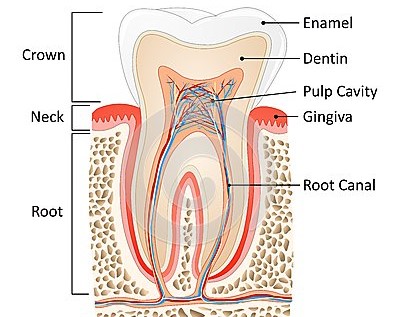
Fractures involving the pulp are not straightforward to deal with.
Dental pulp when exposed is no longer protected by the hard tooth material.
Inflammation occurs swiftly and the pulp like any other tissue swells.
However, if the building pressure isn’t resolved, pulp death will result.
Dead pulp becomes a viable area for infection. It is generally viewed as inevitable that dead pulp does become infected the result being a periapical abscess or tooth root abscess.
These abscesses are often filled with purulent exudate i.e pus.
In these situations, we often see swelling of the face.
Fractures that have pulp involvement must be dealt with by one of the three treatment methods:
- Tooth extraction,
- Vital pulpotomy
- Root canal therapy
There are no other choices.
Fractures that only involve the root have an added complication.
With loss of tooth material below the gingival margin, a pocket is formed.
This pocket acts like any other periodontal pocket and can accumulate plaque and spiral down the periodontal disease pathway to form an abscess.
Do Teeth Always Need To Be Removed? Other Treatment Options
Dog tooth removal is not always necessary.
In some situations, your veterinarian may be able to save and treat the tooth.
This is very dependent on the type of fracture and what structures it has affected.
Exposed dentine can be quite sensitive as the dentinal tubules are exposed. Within the tubules lie fluid, nerve projections and odontoblastic processes which will all be more easily irritated without enamel protection.
In some circumstances, the open dentinal tubules can allow infectious agents to migrate into the tooth and infect the pulp. This can lead to pulpal death.
It is prudent in acute presentations to place a protective layer of resin over the exposed dentine. Large deficits may be treated by having a crown placed.
The three main treatments once pulpal involvement is detected are tooth extraction, pulp capping and root canal therapy. The choice of which treatment is reliant on a few factors: client choice, timing and extent of pathology.
Tooth Extraction
This is a valid treatment option for a tooth with a compromised pulp.
As compromised pulp will eventually result in periapical disease (abscess), extraction will avoid that complication by removing the affected pulp with the rest of the tooth.
Extraction is an alternate treatment when both root canal therapy and pulp capping are not chosen or viable.
Dog Root Canal Therapy
This is aimed at removing the entire pulp system of organic material – pulp, infectious agents and debris.
Once cleaned out the pulp system is filled with inert material and the tooth restored.
Root canal therapy is the treatment of choice for the large “important” teeth in the cat and dog – the canine teeth and the carnassial teeth.
If successful this dental treatment will keep a functional tooth in the mouth so that it can fulfil the majority of its roles free of disease.
Root canal therapy may not be possible due to three major pathological disturbances:
- large periapical lesion/s
- vertical fracturing of the tooth
- large periodontal deficits.
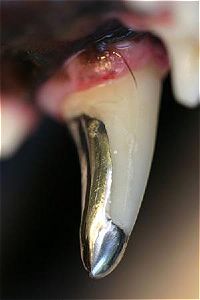
Pulp Capping
This is the treatment of choice for any compromised teeth that are seen immediately after their traumatic fracture.
A vital pulpotomy or direct pulp capping aims to preserve the pulp by inducing dentine repair above the traumatised pulp. With the secondary dentin protecting the previously exposed pulp, the health of the pulp is restored.
There are varied guidelines as to when it is appropriate to perform a vital pulpotomy in relation to the pulpal trauma.
Generally, for animals that are less than 18 months old, the procedure can be performed up to 2 weeks post trauma.
In animals that are older than 18 months, the viable time is only considered to be about 48 hours.
After these times, it is advised to perform a complete pulpectomy or root canal.
Due to the reluctance of the animals themselves to be forthcoming with details, the exact time of exposure is not always known! This is when you need a veterinarian with plenty of dentistry experience to advise what is best.
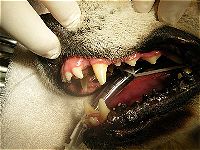
The left upper canine tooth is misshapen indicating a fracture.
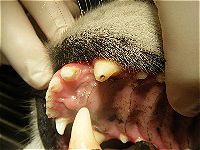
A close up showing the broken canine tooth, with a black hole in the pulp area.
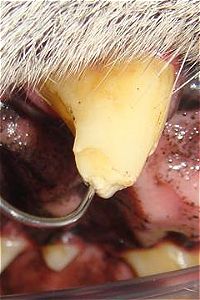
A dental probe is inserted into the pulp cavity (black hole).
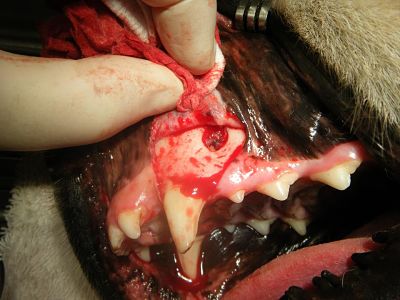
This shows how an infection has entered the tooth and created an abscess in the gum.
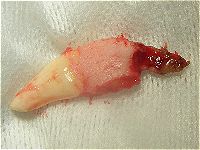
The tooth was removed and we can see that the root is rotten.
The Take-Home Messages
- Know that broken teeth can cause major issues.
- Treating your pets for tooth fractures will improve the quality of their life.
- Early intervention may prevent tooth extraction.
Long gone are the days where “the dog seems OK with it” are tolerable.
It is not ok to leave your dog with a broken tooth. Aside from the welfare point of view, the subsequent issues with an infection will cost you a LOT more in the long term.
Regular inspections of your dog’s mouth by a veterinarian can help your dog live a long, comfortable, happy life.
Frequently Asked Questions
Does Pet Insurance Cover Dental Care?
Most pet insurance providers do not offer rebates for dental care. This is incredibly frustrating for vets and owners alike. We do recommend that you do check with your insurance provider as all policies differ.
Written by Dr Aaron Forsayeth BVSc (Hons) MACVSc (Veterinary Dentistry) & Dr Leigh Davidson BVSc, BApplSc

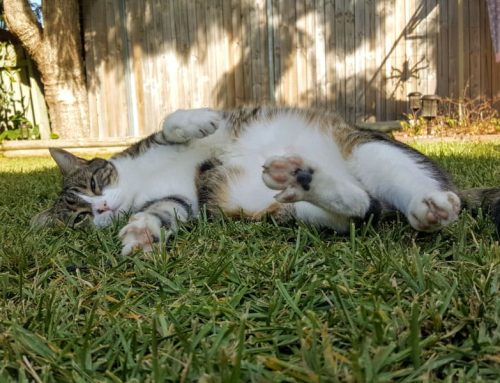
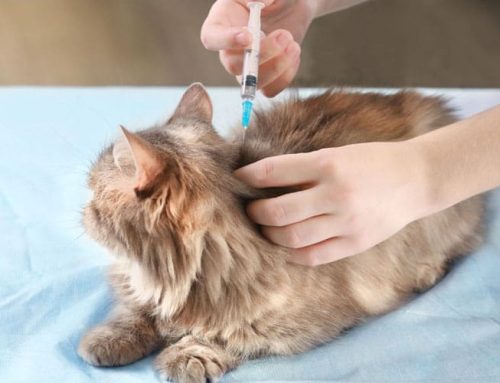
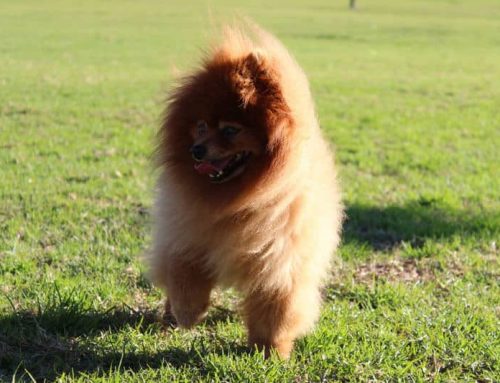
I have a new 10 week old red nose pit who broke one of his fangs partly. what procedures should i expect to have done & price range ?
I have a chihuahua approximately for 5 years old that was given to me who still has one of her K9 puppy tooth that seems to be bothering her now
Hi Mario
If the tooth is bothering her then it is important for you to see your vet and mention this tooth to them. It is likely they will recommend removal. This can be performed at the same time as getting her teeth cleaned.
All the best.
Hi my dog has an over bite and I believe she is going to have to have her lower k9’s removed or cut and capped. Is there even a ballpark figure you would know or a place in Georgia to take her to? Thanks
Hi Dusty,
It’s difficult to give an opinion on price as it depends on so many factors. Where are you located? Let us know where and we can see what we can do.
My dog has broken all her canine teeth. She has major anxiety when she is in a kennel and I think she has been chewing the kennel fencing. Needless to say we now have someone come and house sit. We brought her to a vet the specializes in dental and they determine that (2) need to be pulled and (2) others are likely going to be able to do root canals instead of which they wont know till the get in there. The price tag for (2) teeth pulled and (2) root canals: $4800….if they have to pull all (4) $5400. This seems insanely expensive to me, but clearly I will do what is needed to ensure she is not in pain (no signs, but based on everything I read…why risk). They also dont charge per tooth….its per minute for both extraction and anesthesia. Is this crazy or suck it up and go with it?
Hi Derek
Unfortunately, it’s very difficult to give an opinion on pricing without knowing details of the individual case and the overheads of the business.
Remember it is bloody hard work to extract a tooth especially a canine! I tremble in my boots thinking about it. Think sweat!
It can take longer to remove teeth than to do a root canal.
As an aside, please consider getting help for your dog’s anxiety. Or if it’s only related to kennels, consider getting a home sitter.
Poor girl.
All the best with what you decide.
Dr Leigh
How much does it cost to extract a dogs tooth?
I just looked it up it’s about $500 to $800 depending on the complexity of your animals situation and current health state.
Hi Gina
The cost of a tooth extraction depends on many things:
1. type of tooth
2. extent of damage
3. Requirements of the pet – do they have existing medical conditions that need special requirements for anaesthesia?
4. Type of repair i.e. removal vs capping
If your pet has a broken tooth, you need to go to the vet and have them look at your pet and give you an estimate.
It’s impossible to give quotes without seeing what the issue is. Unfortunately, animals are all different and what one might need can be completely different to what another animal needs! Frustrating!
All the best. x